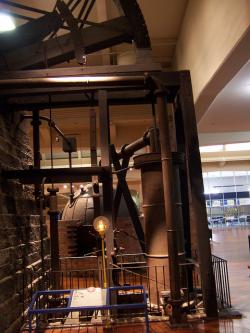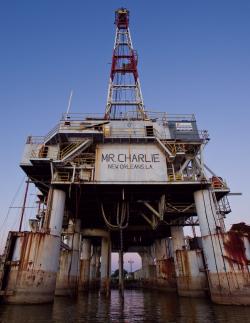The Glengyle is the earliest known survivor of the fleet of heavyweight, all-steel sleepers built by Pullman Company. The design was introduced in 1907 as a marked improvement over the wooden version then in use. Some 10,000 were built, in various configurations, the last in 1931. The Glengyle is original in its interior and most of its components.
ASME



This is the first extremely smooth, surgically implantable, seam-free pulsatile blood pump to receive widespread clinical use. In its use in more than 250 patients, it has been responsible for saving numerous lives. When used as a bridge to transplant, the pump has a success rate greater than 90 percent. There has never been a device-failure-related fatality of any of these patients. A successful heart-assist pump could save an estimated fifteen thousand individuals annually.

The Noria al-Muhammadiyya is the most famous of many norias in Hama. This giant operating noria is unique in both size and age. Built in 763 AH, or 1361 CE, and still in use today, it is a stand-alone water pump. The river that provides the water it raises also serves as its sole source of energy.

The unprecedented innovation of the steam-atmospheric engine by Thomas Newcomen (1663-1729) of Dartmouth and his assistant John Calley stands at the beginning of the development of practical thermal prime movers in the early years of the eighteenth century. Spreading through Europe and then to the Cornwall mines in the New World, it was one of the strategic innovations in world history and the single greatest act of synthesis in the ensuing history of the steam engine.

Designed by Alden “Doc” Laborde, Mr. Charlie is the first offshore drilling rig that was fully transportable, submersible and self-sufficient, allowing it to drill more than 200 oil and gas wells along the Gulf Coast between 1954 and 1986.


This floating dredge is one of the last mammoth gold dredges in the Fairbanks Mining District that traveled an ancient stream bed, thawing the ground ahead of it and scooping up the gravel. During 32 years of operation, a fortune in gold washed through its sluices. Ladder dredges came to Alaska in the early 1920s, after the U.S. Smelting, Refining, and Mining Company (USSR&M) brought water to the area via the 90-mile Davidson Ditch. Using the water to warm the ground, the ground was thawed at an average 9 inches a day.

The DWP was the first mechanized, compact service-line trencher developed for laying underground water lines between the street-main and the house. This machine, first produced in 1949, replaced manual digging, thus making installation of running water and indoor plumbing affordable for the common household. The DWP paved the way for the creation of a worldwide trenching-products industry, its machines used for the installation of all underground utilities including telephone, cable-TV and data, and fiber-optic cables.

This collection of equipment—all of it maintained in operating condition and used for educational purposes—was established in 1987. It spans the period from the late 19th century to the 1940s, when steam was the prime motive force for most U.S. industries, including rail and marine transportation. The collection of about 25 items (mostly stationary steam) includes a locomotive, switcher, and steam tractor: Locomotive #385 Consolidation 2-8-0 designed for fast freight service was built by Baldwin Locomotive Works of Philadelphia in November 1907 for the Southern Railway.
Works of Philadelphia, PA in 1907 for the
Southern Railway. Now part of the Bergen County Steam CollectionEra_date_from: 1900s

Published in 1914-15, the ASME Boiler and Pressure Vessel Code (BPVC) was the first comprehensive standard for the design, construction, inspection, and testing of boilers and pressure vessels. With adoption in the United States and use in many countries, it has contributed significantly to public safety and influenced the continued development of boiler and pressure vessel technology.


